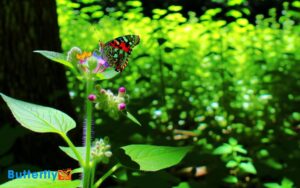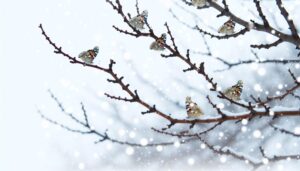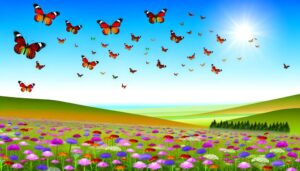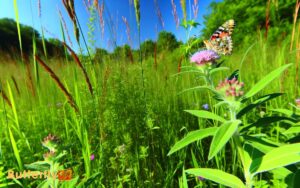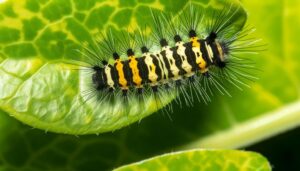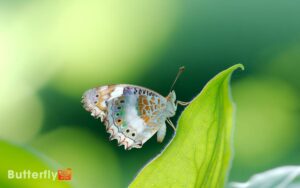Painted Lady Butterflies in Hollywood: Discover Journey!
Hollywood plays a crucial role in conserving Painted Lady butterflies, which migrate biannually between North America and Mexico, stopping at iconic landmarks like Griffith Park.
These butterflies, identifiable by their orange and black patterned wings and erratic flight, are most visible during spring and fall migrations.
Hollywood’s media productions, celebrity advocacy, and educational campaigns greatly boost public awareness. Essential conservation practices in the region include preserving native plants and reducing pesticide use to maintain habitats.
Best viewing times are clear, sunny days in late morning or early afternoon, encouraging further exploration into their fascinating migration patterns and habitats.
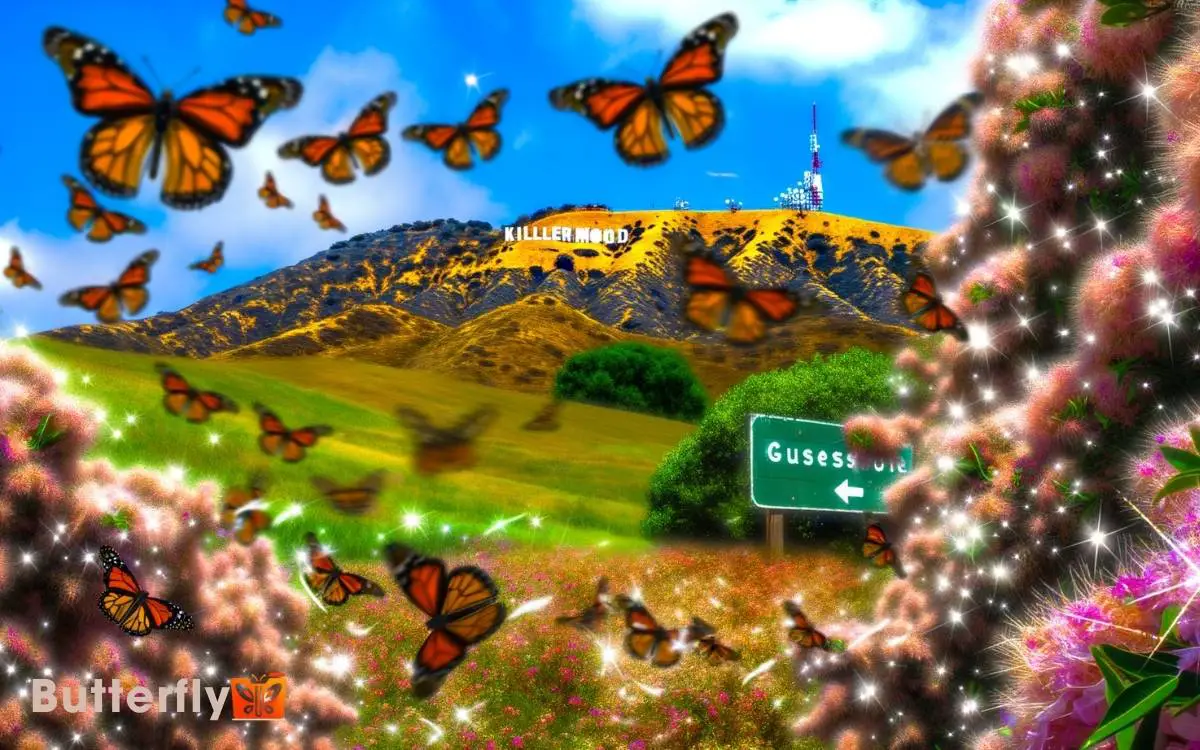
Key Takeaways
Migration Patterns
The migration patterns of Painted Lady butterflies exhibit remarkable precision, as they traverse thousands of miles between North America and Mexico. These butterflies rely on environmental cues such as temperature and daylight to time their movements.
During spring, they journey northward, breeding along the way, establishing successive generations that continue the migration.
In the fall, the population returns south, completing the cycle. This biannual journey isn’t undertaken by a single individual but rather through multiple generations, each advancing a leg of the trip.
Their navigational accuracy is attributed to an innate instinct coupled with external factors, ensuring their survival and reproduction.
The Painted Ladies’ migration highlights the intricate balance between biology and environment in guiding such extensive movements.
Identifying Painted Ladies
Recognizing Painted Lady butterflies involves noting their distinct orange and black patterned wings, which feature white spots near the tips. Their wingspan ranges from 5 to 9 centimeters, making them relatively medium-sized.
The underside of the wings displays a mottled brown and gray appearance, providing effective camouflage. Painted Ladies also have four small eyespots on the hindwings, which can deter predators.
Their bodies are robust, covered with fine hairs, and their antennae are clubbed, aiding in navigation. These butterflies exhibit rapid, erratic flight patterns.
Observing these characteristics helps differentiate Painted Ladies from similar species, such as the American Lady butterfly, which has two large eyespots instead of four. Accurate identification supports ecological studies and conservation efforts.
Hollywood’s Role
Hollywood plays a significant role in promoting awareness and conservation of Painted Lady butterflies through its influence in media and public outreach.
The entertainment industry’s vast reach helps disseminate critical information about these butterflies’ ecological importance.
Documentaries and films often feature the Painted Lady, highlighting its migratory patterns and habitat needs. Celebrities and influencers advocate for butterfly-friendly practices, enhancing public engagement.
Below, a table outlines Hollywood’s contributions to Painted Lady conservation:
| Contribution Type | Example |
|---|---|
| Media Production | Nature documentaries featuring Painted Lady butterflies |
| Celebrity Advocacy | Public figures promoting butterfly conservation practices |
| Educational Campaigns | School programs supported by Hollywood entities |
| Fundraising Events | Charity events raising funds for butterfly habitats |
| Social Media Outreach | Influencers sharing information on butterfly preservation |
These efforts collectively amplify conservation messages, fostering a society more conscious of environmental stewardship.
Iconic Landmarks
Iconic landmarks in Hollywood serve as essential habitats and migratory waypoints for Painted Lady butterflies, emphasizing the intersection of urban environments and wildlife conservation.
Griffith Park, with its diverse flora, provides an indispensable stopover for these butterflies during their biannual migration.
The Hollywood Sign area, surrounded by native vegetation, offers nectar sources essential for their sustenance. In addition, the Los Angeles Arboretum plays a pivotal role, hosting a variety of flowering plants that cater to the butterflies’ feeding needs.
The proximity of these landmarks to urban settings illustrates how carefully managed green spaces can support native wildlife.
By preserving these areas, Hollywood not only maintains its cultural icons but also contributes to the ecological health of the region.
Wildlife Conservation
Effective wildlife conservation practices in Hollywood are essential for sustaining the delicate balance between urban development and the natural habitats of the Painted Lady butterflies.
These practices include preserving native plant species that serve as both food and breeding grounds for the butterflies.
Restoration of green spaces, such as parks and gardens, plays a pivotal role in maintaining the ecological network necessary for their survival. Monitoring pollution levels and reducing pesticide use are also essential to guaranteeing a safe environment.
Engaging the local community through educational programs helps raise awareness about the importance of these butterflies.
By implementing these measures, Hollywood can protect the Painted Lady butterflies while accommodating its growing urban landscape. Proper management ensures both biodiversity and urban development coexist harmoniously.
Best Viewing Times
Ideal viewing times for Painted Lady butterflies in Hollywood typically coincide with their peak migration periods and daily activity patterns. Scientifically, these butterflies are most visible during the spring and fall migrations, aligning with their north-south movement.
Daily activity peaks occur in the late morning to early afternoon when temperatures are best for flight.
To maximize sightings, consider these key points:
- Migration Seasons: Spring (March to May) and Fall (September to November) are prime times due to migration.
- Time of Day: 10 AM to 2 PM is ideal as butterflies are most active in warmer temperatures.
- Weather Conditions: Clear, sunny days without strong winds enhance visibility and butterfly activity.
These guidelines provide the best opportunity to observe these vibrant insects in their natural habitat.
Community Involvement
Community involvement in supporting the Painted Lady butterflies in Hollywood includes significant local conservation efforts. Educational workshops are offered to inform the public about the species’ habitat requirements and lifecycle.
Additionally, numerous volunteer participation opportunities are available for residents to contribute to butterfly monitoring and habitat restoration projects.
Local Conservation Efforts
In Hollywood, local residents and environmental organizations have joined forces to create habitats that support the thriving population of Painted Lady butterflies.
Their collaborative efforts focus on three main areas:
- Planting Native Flora: By introducing native plants such as mallow and thistle, they provide essential nectar sources and larval host plants for the butterflies.
- Creating Butterfly Gardens: Community members design and maintain butterfly-friendly gardens in public spaces, enhancing urban biodiversity.
- Monitoring and Research: Volunteers and scientists conduct regular surveys to track butterfly populations and assess habitat health, contributing to data-driven conservation strategies.
These initiatives not only aid in sustaining the Painted Lady population but also foster a greater appreciation for urban wildlife among Hollywood’s residents.
Educational Workshops Offered
Hollywood’s environmental organizations and local volunteers have rolled out a series of educational workshops aimed at equipping residents with the knowledge and skills to support Painted Lady butterfly conservation.
These workshops cover a wide range of topics including butterfly life cycles, habitat requirements, and threats from urban development.
Experts provide hands-on training in creating butterfly-friendly gardens using native plants that provide essential nectar and breeding sites.
Attendees learn to identify different stages of the butterfly’s life, from egg to adult, and understand the importance of maintaining pesticide-free environments.
Scientific data on migration patterns and climate impact is also shared, fostering a thorough understanding of conservation strategies.
These workshops empower the community to actively contribute to preserving this iconic species.
Volunteer Participation Opportunities
Frequently, local residents have the opportunity to participate in hands-on conservation efforts through organized volunteer programs dedicated to supporting Painted Lady butterflies.
These initiatives engage community members in scientific and ecological activities, fostering a deeper understanding of butterfly biology and habitat requirements.
Volunteer programs often include:
- Habitat Restoration: Volunteers plant native flora, creating essential habitats for the butterflies to thrive.
- Monitoring and Research: Participants collect data on butterfly populations and behaviors, contributing to ongoing scientific studies.
- Public Education Events: Volunteers assist in organizing and conducting workshops to educate the public about the importance of butterfly conservation.
These volunteer activities not only enhance local ecosystems but also empower residents with knowledge and skills to sustain environmental stewardship.
Conclusion
To sum up, Hollywood’s vibrant landscape offers a unique vantage point to observe painted lady butterflies during their remarkable migration. Every spring, these delicate creatures embark on a long journey from the deserts of Mexico to the northern regions of the United States. The sight of painted ladies butterflies in California fluttering across the skies adds a touch of natural beauty to the bustling cityscape. Observing their migration in Hollywood serves as a reminder of the fascinating connection between urban life and the wonders of nature.
With iconic landmarks serving as picturesque backdrops, these butterflies captivate both residents and tourists.
Conservation efforts guarantee their continued presence, while the community’s involvement underscores the importance of preserving this natural spectacle.
But, isn’t the sight of painted ladies fluttering against the Hollywood skyline a reminder of the delicate balance between urban development and wildlife conservation?

